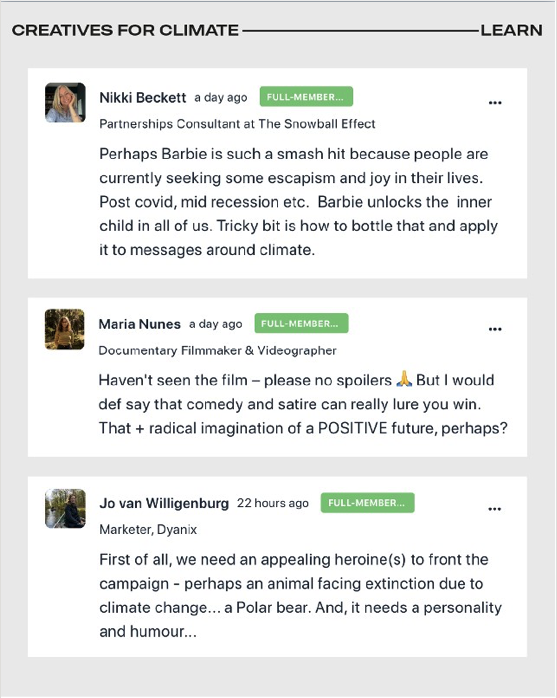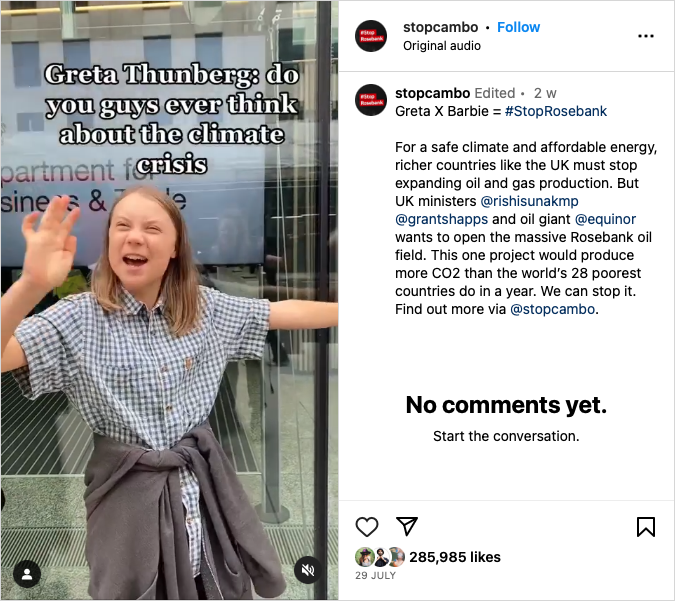Can Barbie really teach us about business for good?
16/8/2023
Unless the Barbie buzz has inexplicably passed you by, you’ve probably heard that Greta Gerwig’s foray into Barbie Land has a proud, pink feminist heart.
Many cinema goers have left theatres pleased that, despite being a Mattel Films production, the movie fits in its fair share of jabs at the Barbie creators, critiques of gender roles and digs about the hotly debated impact of Barbie over the decades (we didn’t expect to hear Barbie called a fascist, that’s for sure).
But should the satire be held up as a shining example of feminism in action? Or does the obvious commercial motive behind it – to promote the Barbie brand and sell dolls – undermine its messaging? We’ve been mulling it over and seeing what lessons those of us in the social impact space can take from its success.
The IRL feminism of Mattel
One of the ways Barbie sends up Mattel is with a hapless all-male executive board, motivated by profit. It turns out, the male domination at the top of the company isn’t much of a comic exaggeration. All but one of their current executive officers are male.
Meanwhile, Mattel Films executive producer Robbie Brenner has stated that Barbie is “not a feminist movie,” a confusing take that shows a disconnect between the brand and the film crew’s creative aims.
Then there’s the Barbie brand’s not-so-fantastic plastic problem. The doll’s famous heeled feet leave a hefty plastic and carbon footprint, which the film’s success is only going to exacerbate. With climate breakdown a feminist issue, disproportionately impacting women in the global south, can the toymaker uphold feminist values without environmental ones to match?
Business as a true force for good
This is where the tension lies in social advocacy messages coming from big corporations. Often, they’re profiting from values they’re yet to embrace. That disconnect between what brands say and what they do is something we reflect on a lot around here.
Just recently, we pointed out the example of Tesco sponsoring Pride, while refusing to pay factory workers who worked in forced labour conditions. It’s something like the cognitive dissonance Barbie highlights.
Of course, we know that business as a force for good is possible. Through social enterprise, commercial motives and positive change go hand in hand. Social and environmental values are never just a sales tool for these brands – they’re embedded in the business model.
Three lessons we took from Barbie
So, looking to big corporate brands of Mattel’s ilk for social advocacy lessons is complicated. That said, the film has been inspiring many of us in the social impact community in lots of ways.
We can learn from the way the film delivers its message and its success, to help us champion more business for good and meaningful advocacy.
1. Bringing humour and entertainment to scary topics
We loved the thoughts shared over on the Creatives for Climate LinkedIn community on this. Their members highlighted how stories with a touch of humour, nostalgia and entertainment are often more likely to engage an audience, rather than presenting cold, hard reality of the problems we face.
As one creative pointed out, we’ve all had times where we don’t have the mental energy to take in a hard-hitting documentary or news article. Sometimes, we want our social and environmental education delivered in colourful, upbeat lessons à la Barbie.
2. Be part of culture
Through Barbie, Mattel shakes off ideas of their dolls as dated or irrelevant with a 2020s makeover. This new evolution of the Barbie brand is self-aware and delves into the discourse around gender and culture of today. Actually, it is the discourse of today.
In the process, Mattel (and Gerwig and the filmmaking team) have made Barbie matter to customers again, as brand storytelling experts at Sonder & Tell put it. “Good brand evolutions or revolutions are about more than looking like you’re part of culture. They’re about being part of culture,” writes their team in a recent edition of The Word newsletter. It’s about taking your brand storytelling in a direction that feels relevant and timely.
Talking of relevant and timely pop culture – the rest of us can use stories with global resonance as a hook to get our own message out there. Yep, like we are right now. Even Greta Thunberg and fellow climate activists jumped on the Barbie content wagon, to poke fun at the UK government’s ludicrous plans for a new oil field.
3. Making socially conscious values the norm
There’s one obvious upside to social advocacy coming from a blockbuster film, whoever its creators: a mammoth audience. The movie took a staggering $1.03 billion at the global box office (we wonder how many Barbie Dream Houses that could buy?).
Whatever we feel about Mattel’s questionable commitment to the cause, Barbie is still taking feminism mainstream. Lots of people in our social circles are watching, talking about and, for the most part, enjoying this film about feminism and gender equality.
The value of that? Social acceptability. When ideas about social and environmental advocacy have social acceptability, they’re more likely to inspire behaviour change. Likewise, if ideas or values are presented as socially unacceptable (like the objectification of women in Barbie, for instance), people are less likely to do them.
Obviously, most of us don’t have a Barbie-sized platform to get our messages out there. But we can still use social proof to show our values are socially acceptable. That might look like sharing user generated content, creating case studies or teaming up with influencers to spread your message.
For more reads on feminism and social change, check out our social change book club picks for the summer.



